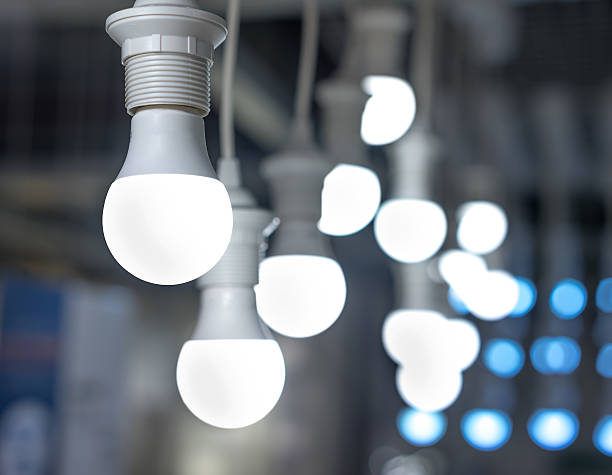LED Lighting and the Future of Lighting Technology
The future of lighting is bright! Thanks to technological advancements, lighting today is more efficient, customizable, and affordable than ever before. LED light technology has changed the way we illuminate our homes, offices, and other buildings. LED stands for light-emitting diode. The term describes a specific type of semiconductor that emits light when voltage is applied. The first LED was developed in 1954 by Alfréd Wertheimer, a German engineer; however, it wasn’t until the 1990s that LEDs (and their applications) started seeing widespread adoption. Today, LEDs are used for a wide variety of purposes. They are increasingly being used in homes and businesses as replacement lighting solutions or supplementary lighting for existing fixtures. Here are some facts about this groundbreaking lighting technology:
LED Basics
LEDs are semiconductors that convert electricity into light. There are three main types of LEDs: direct current, alternating current, and ultraviolet. Direct-current LEDs emit a consistent stream of light without the need for a power source to generate the electrons. Alternating current LEDs generate electrons when the current is flowing in one direction, then stop moving and reabsorb the electrons to emit light in the other direction. Ultraviolet LEDs emit light within the wavelength of ultraviolet rays, which is why they’re used in security lamps.
LED Benefits
Energy Efficiency: LEDs are among the most energy-efficient lighting technologies available. A 120-watt incandescent bulb consumes approximately 800 watts of electricity, while an LED consumes approximately one-fifth of the energy. Low Maintenance: Unlike fluorescent and sodium-based lighting, LEDs are maintenance-free and require no filters to prolong their lifespan. In addition, LEDs don’t contain any mercury. Long Lifespan: LEDs last up to 50 times longer than incandescent light bulbs, with a lifespan of up to 50,000 hours. Light Quality: LEDs emit light that is natural to the human eye with no red tones, bluish hues, or harsh brightness.
LED Disadvantages
Expensive: LEDs are more expensive than traditional incandescent bulbs. However, they are quickly becoming more affordable as manufacturing costs decrease. Limited Color Palette: Unlike natural light, LEDs don’t emit colors like blues, reds, and oranges. Also, because LEDs don’t produce anything other than light, there is no diffusion of colors, so colors look less vibrant. Long Installation Time: LEDs are more complicated and time-consuming for installers to use than traditional bulbs. It takes about 2 hours for an experienced electrician to install a typical LED lighting system.
Read More: Using New Technology in Nursing Practice
Types of LED Lighting
General Lighting: General lighting is used for ambiance or task lighting. This type of LED lighting is commonly used in kitchens, bathrooms, closets, and offices. Closet Lighting: Closet lighting is ideal for closets, laundry rooms, and garages. It’s also a great solution for walk-in closets and cabinets with limited ceiling space. Walkway Lighting: Walkway lighting is ideal for exterior paths and stairs. It’s also a great solution for mounting under overhangs with limited ceiling space. Patio Lighting: Outdoor lighting is helpful for additional lighting in the backyard, lawn, patio, and pathways. Deck Lighting: Deck lighting is ideal for outdoor living spaces such as patios, porches, and decks. Wall Lighting: Wall lighting is an excellent solution for hallways, staircases, and bedrooms.
Requirements for LED Lighting in the Home or Business
Brightness: LEDs emit less light than traditional lighting, which means they don’t replace traditional lighting fixtures but complement them. Power Source: LEDs require a power source to operate. This means you’ll either have to replace your existing light fixtures with LED lights or install new electrical wiring. Quality Lighting: LEDs emit a bright, consistent light, whereas traditional lights have a variety of colors and brightness levels. Light Distribution: Light fixtures distribute light more evenly than incandescent bulbs, and LEDs produce even light. This means that LED lights create a more natural atmosphere. Energy Savings: LED lights are more energy-efficient than traditional bulbs, and they last longer. This means you’ll save money on your utility bills and avoid greenhouse gas emissions.
Conclusion
LEDs are a more sustainable and cost-effective alternative to traditional lighting, while also offering a much more natural light spectrum. This change in lighting drastically transforms a building’s aesthetic and adds a more sophisticated feel to the interior. It’s important to note that LEDs aren’t just for residential buildings. They’re also used for commercial applications like signs, billboards, and building exteriors. Furthermore, LEDs have a long way to go before they become as mainstream as traditional incandescent bulbs. For now, the future of lighting is bright!




